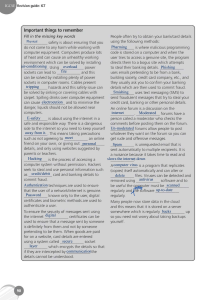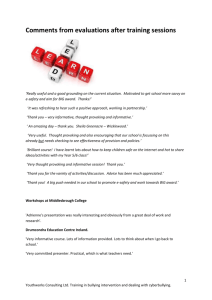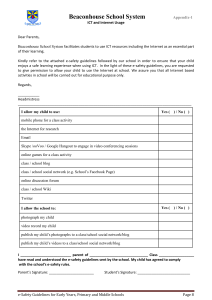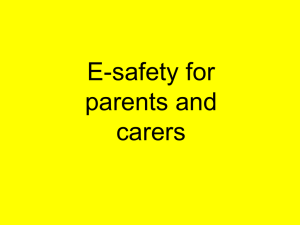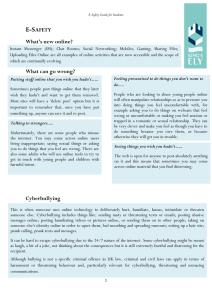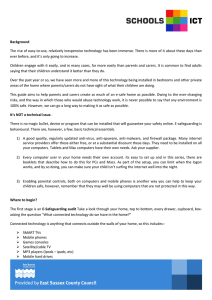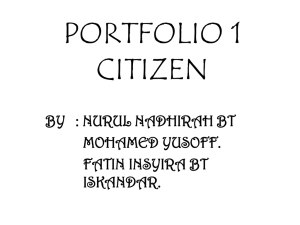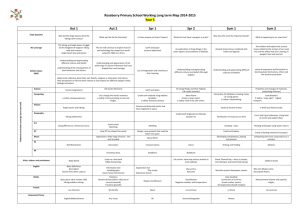What is E-safety? - Stechford Primary School
advertisement
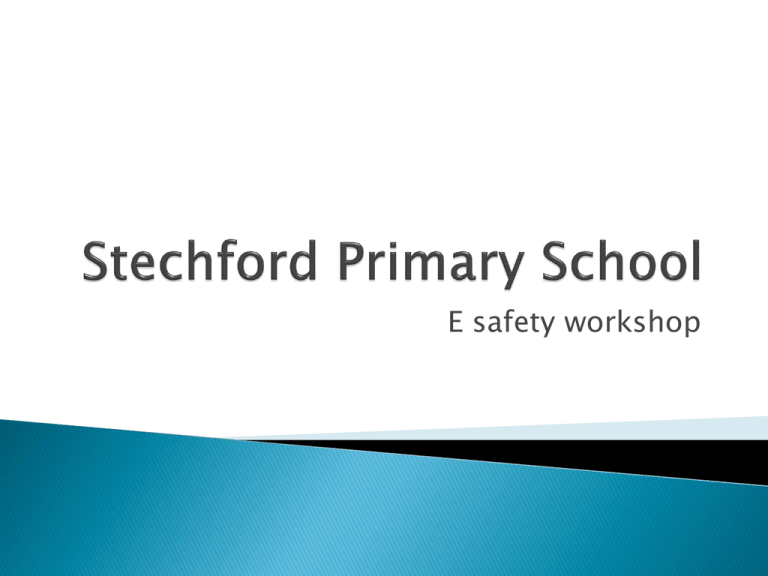
E safety workshop Resources Available on our new website www.stechfordprimary.co.uk This presentation SMART safe advice and posters E safety policy Notes of safer internet searches, parental controls and social media. What is E-safety? E-safety in school E-safety outside of school ◦ Cyberbullying http://www.childnet.com/resources/know-it-allfor-parents/kiafp-cd What you can do? Safe practice in regard to anything digital -personal computers -internet browsing -cameras -gaming -MP3 players -Mobile/smart phones Tablets “It is the framework which changes with each new technology and not just the picture within the frame.” Marshall McCluhan John Tudor “Technology makes it possible for people to gain control over everything, except over technology” 93% of children use a computer and phone 8 out of 10 teenagers have a home computer, mobile phone/tablet and games console 1,400,000 UK pupils have their own web space There are over 200 million registered users of social media services There are over 2.7 billion searches on Google each month The number of text messages sent every day exceeds the total population of the planet 55% access the internet everyday • 47% for an hour or more • 21% liked IM/Chat the most • 15% used gaming sites • 11% used Social Networking sites • 33% had access in their bedrooms • 25% have met someone offline – one quarter of these did not take anyone with them. of the three quarters who did 83% took a friend not a trusted adult. ‘Strangers / paedophiles’ is the most mentioned main safety concern among parents of all ages of children (50% ) Other main concerns of parents are: ◦ ◦ bullying (36%); accessing inappropriate / harmful content (10%). Most children (88%) feel safe most of the time. One third (33%) say they feel safe almost all of the time. Less than 3% of children say they feel safe only occasionally. Children are most concerned about: gangs and knife crime (34%); ◦ strangers / paedophiles (25%); ◦ and bullying (16%). Children have very low concern for: inappropriate content (7%) Discussing E-safety before any internet browsing. •Having websites pre-checked and ready •Being careful with Google and Youtube •Locking PCs when not in use •Not leaving USB sticks or Memory cards lying around •Using School email for professional use •Procedures in place for dealing with issues in school Stechford takes E-safety seriously All class rooms display the SMART e safety rules. All lessons where the children are using internet resources they are reminded of good and safe practise. Web searches will be conducted through the google kids safe search where possible. The schools systems run a highly effective fire wall and policy central software. ‘Apply the same principles as with Stranger Danger, or Road Safety’ 73% of online adverts are not clearly labelled making it difficult for children and adults to recognise them 57% of 9-19 yr olds have come into contact with online pornography accidentally. 4 in 10 pupils aged 9-19 trust most of the information on the internet. 1/3 of young people have received unwanted sexual or nasty comments online. Only 7% of parents think their child has received such comments. Contact risks 49% of kids say that they have given out personal information 5% of parents think their child has given out such information Not who you think it is 25% have met someone offline – one quarter of these did not take anyone with them. of the three quarters who did 83% took a friend not a trusted adult Internet activity should be monitored Have your children working in the same room as a responsible adult Make sure your antivirus software is up to date. Turn on parental controls – probably part of your antivirus package. If you don’t have these things there are a number of free programs you can use. Parental controls Discourage children from the use of social media such as facebook, children should be a minimum of 13 to use it. The school has a VLE which is blocked from public view. What is Cyberbullying? Threats Hacking Manipulation Stalking Public postings Prejudice Exclusion Threats and intimidation Harassment or stalking Vilification / defamation / prejudice-based bullying Ostracising / peer rejection / exclusion Identity theft, unauthorised access and impersonation Publicly posting, sending or forwarding information or images Manipulation ◦ Threats sent to people by mobile phone, email, or online. ◦ Repeated, prolonged, unwanted contact or monitoring of another person. ◦ These may be general insults or racist, homophobic or sexist bullying. ◦ Set up of a closed group refusing to acknowledge one user on purpose. ◦ „Hacking‟ by finding out or guessing a username and password. ◦ Disclosing information on a website. ◦ May involve getting people to act or talk in a provocative way. Most games have an age certificate ◦ In the same way that age ratings are legal restrictions for DVD and Cinema releases they are also law with regard age restriction – children should not buy or PLAY games outside of their age range! Most games have an online content:- ◦ Fifa, CoD etc.. ◦ These games don’t just allow you to play online but talk and see other players – unfiltered and unregulated. ◦ Children’s gamer identities must also be protected.
